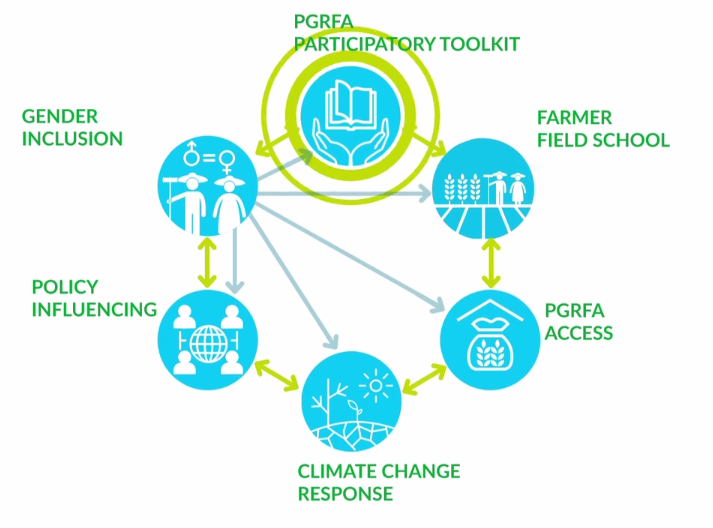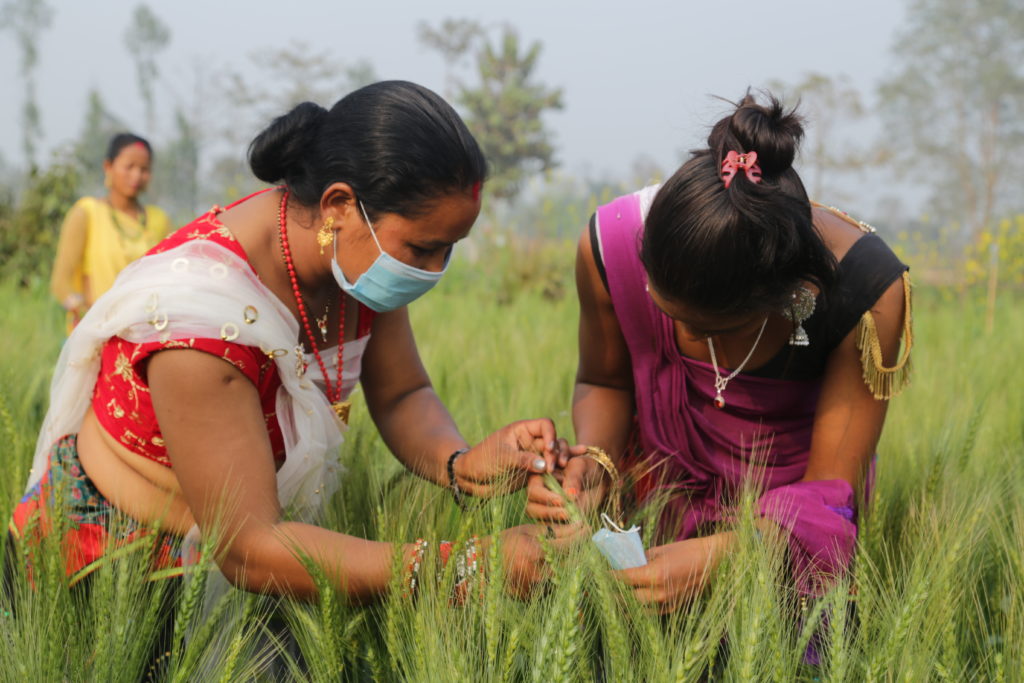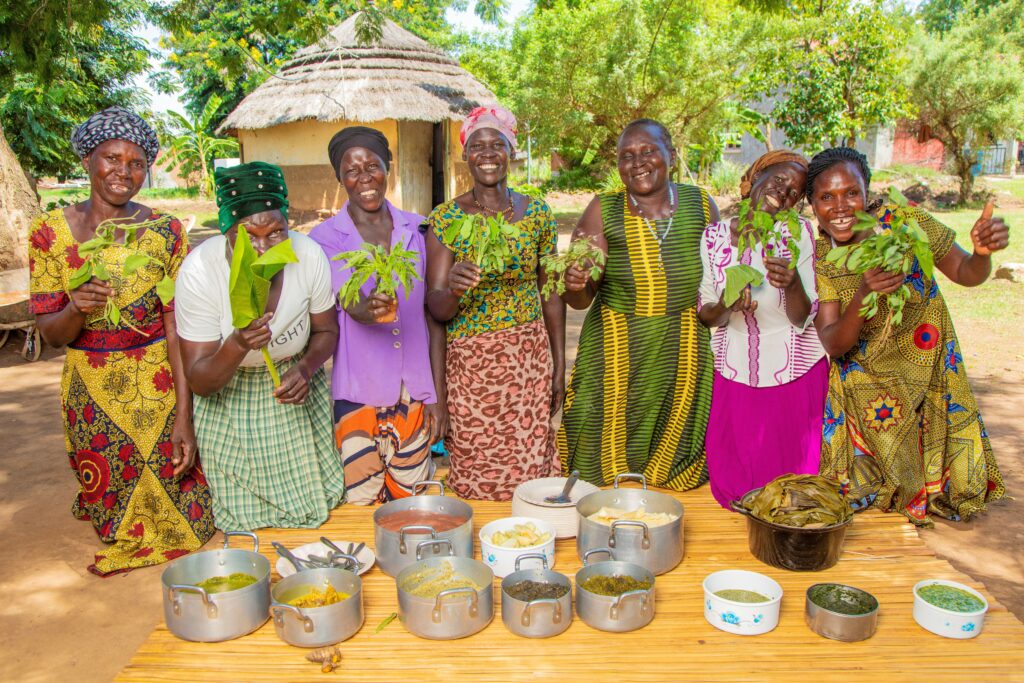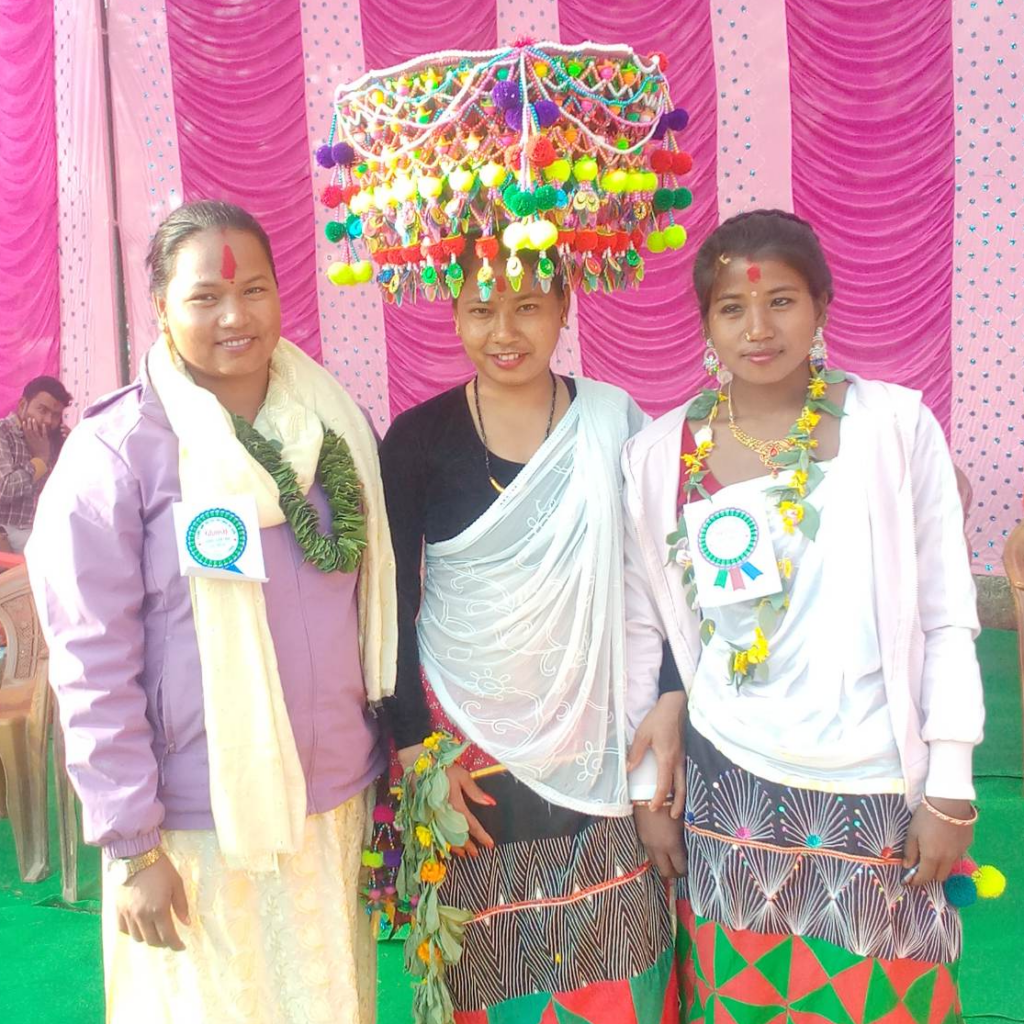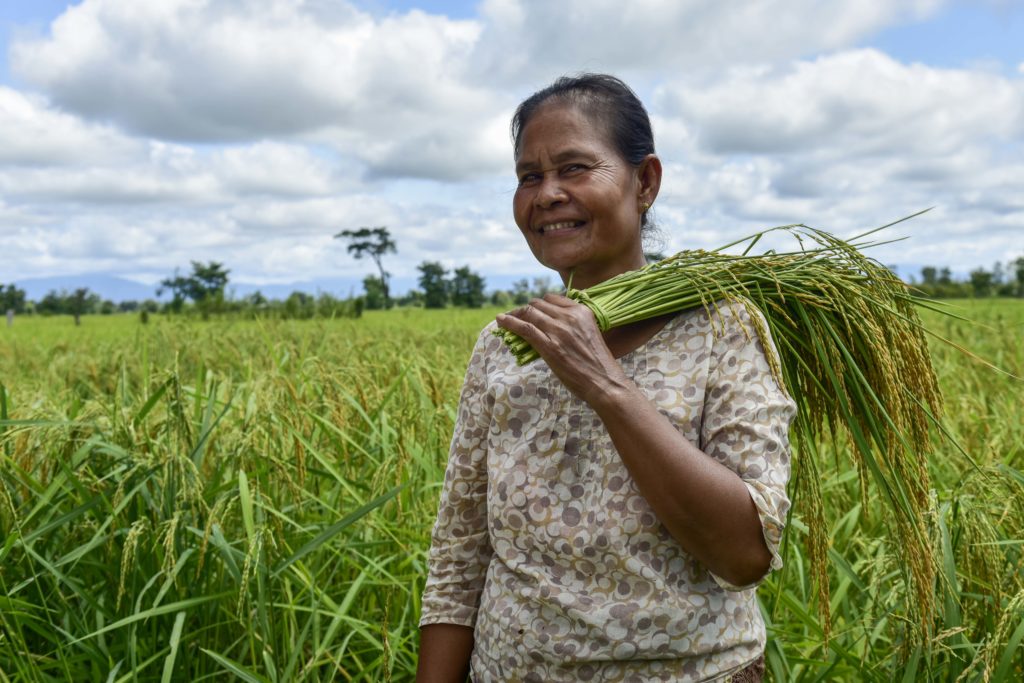The SD=HS program aims for widespread impact in such a way that social, environmental and economic conditions can be enhanced beyond the context of the program. In this video, we explain the six integrated pathways that are crucial to the SD=HS methodology.
The pathways mentioned are:
- Participatory toolkit for plant genetic resources for food and agriculture – providing farmers
insights into their livelihoods, especially concerning past, present, and future changes in their seed and food security, in cropping patterns, and farming practices. The toolkit is adapted continuously and helps farmers set their breeding planning. - Farmer Field Schools (FFS) – an effective learning forum in which farmers’ and indigenous communities’ traditional knowledge and science-based knowledge and technology are combined to strengthen technical capacities.
- Access to plant genetic material for food and agriculture – Access to seed diversity (from the gene bank and through community exchange, facilitated by the program) strengthens farmers’ capacity to cope with adversity as a consequence of globalization, market forces, and climate change.
- Climate change response – through the inclusion of climate related tools, the program enables exchanges and comparison between farmers’ perception of climate change and meteorological data. Climate change response is an important topic in the FFS curriculum. By establishing community seed banks, we strengthen farmers’ capacity to store seeds of local varieties to resow in case of lost harvest.
- Policy influencing – SD=HS links local practices and voices of farmers with the global debate on Farmers’ Rights. SD=HS analysed with farmers and governments the impact of seed laws on local seed systems and presented the resulting evidence, as well as proposals for improvements to national and international policy makers. In several cases this was done by farmer leaders themselves.
- Gender inclusion – SD=HS strengthens women’s participation and leadership and has applies engendered approaches (disaggregated baseline, participatory gender analysis, diversity wheel and other) to strengthen the position of women in households, in the community level and in institutions.

